Dachshund, – “badger dog”, – the name tells us all about this short-legged and long-bodied dog breed from Germany. They are hunting dogs and are bred for hunting badgers and other small prey. During hunting with dachshunds, the hunter usually lets loose few of them – especially if they are hunting badgers – out into the hunting area. These dogs, after locating their prey, (a badger for example), will gather on it and effectively immobilize it for the hunter.
But how such a small dog can immobilize a badger that is twice the size of a dachshund? What other types of activities are wiener dogs used for? Is it even legal to use them for chasing down animals, and is dog hunting still popular around the world? In this article, you will find a lot of interesting facts about hunting with Dachshunds.

History Of Hunting With Dogs
For a lot of people living in the cities, the concept of dog hunting is not particularly defined or clear. Some feel hunting is all about chasing wild beasts and gunning them down for sport. While this isn’t necessarily wrong, it doesn’t adequately describe the scope of hunting. It is no wonder that in the modern world hunting has receded from the hearts of men. Technology and civilisation have made the activity mostly redundant for many.
Men began the use of dogs to aid hunting about 20,000 years ago. Several species of wolves began settling anywhere close to where they found people inhabitants, which eventually led to the working relationship humans currently have with dogs.
There is a belief that dogs were the first animals that man has domesticated; long before other stock like sheep, cows, goats, etc. Archaeologists have found hidden caves with images depicting humans and dogs in different contexts; many of which suggest that people used dogs as hunting aids, guardians, etc. In modern times, the relationship between human being and a dog has evolved. Dogs have become an integral part of man’s society, even if hunting has become more of an activity or sport than necessity.
Hunting with dogs has continued to evolve through the ages, a little over 6000 years ago, some species of dogs found favour in the sight of man; mastiffs, wolfhounds, pointers, etc. were among the favoured. Amidst these breeds, certain traits were of major interest to man, and they began to use each dog kind for their specific needs.
It was during this time when breeding has started. People bred dogs for specific traits, and were used for different tasks according to the quality that was best suited to each task. Dog breeding exists to this day, and the result is a wide range of different dog breeds, the Dachshund breed being one of them.
What Dachshunds Are Used For Today?
Hunting out of necessity has become redundant in most places, but it remains as a sport and is still widely practiced among many. Wiener dogs are still commonly used in hunting sports around the world. Dachshunds are not only used for hunting, but predominantly as pets. It is no doubt that dachshunds, while initially bred solely for tracking and hunting, are adorable creatures and can be wonderful soulmates.
Aside from their use by hunters and as pets, dachshunds also participate in dog racing. Dachshund racing is actually quite popular, especially in America. These racing events are used for fundraisers or publicity events, effectively gathering large audiences wherever they are hosted. While the dachshund racing sport may have been crowd raising, criticism has risen over their use in these races.
Many believe it is quite unethical to use this particular dog breed for racing events. It is a well known fact that they are predisposed to spinal cord injuries because of their unusually long backs. The Dachshund Club of America strongly opposes dachshund races due to this reason. The sport has been banned in a few countries.
Apart from this, people sometimes use dachshunds as cadaver dogs. They track wounded or dead people at sites of tragedies like hurricane and earthquake attacks.
Dachshund Breeding For Hunting
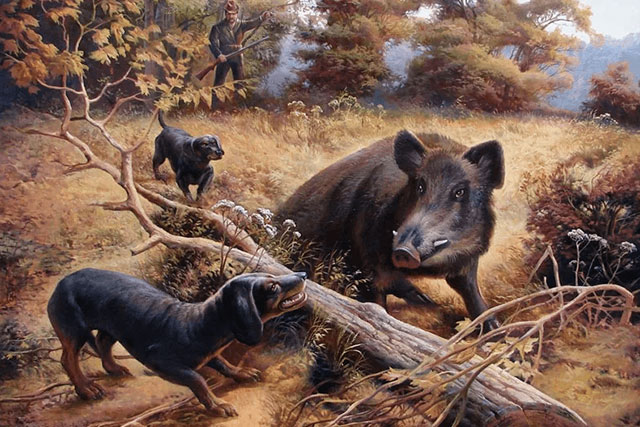
During the period when hunting was still a thing of necessity and not enjoyment, men preferred to hunt smaller games. Apparently, because larger games were not so easy to capture. Nevertheless, hunting larger games became very important when tribe leaders found that there were more mouths to feed than there were captured game. A rabbit or a hare could only go so far in feeding a tribe with lots of folks. Now that hunting is more sport than necessity, men have mostly left larger games in favour of smaller ones.
This was the time when hunters realised they need a smaller dog breed to chase down smaller animals like rabbits, armadillos, badgers, etc. Small prey was a little more tricky to hunt. They were more likely to hide in their holes, rather than strut around above ground with their pursuers.
The Germans found the solution, – they created the dachshund. The Germans bred them by coat variety; smooth-haired, long-haired and wire-haired, and of two sizes; miniature and standard size. The standard dachshunds were bred to scent and hunt down animals that tend to dwell in burrows, flushing them out from their hiding place. The miniature dachshunds are slightly smaller and were bred mainly to hunt down smaller prey like rabbits and moles.
While they were bred for hunting below ground, they were also renowned hunters above ground too. Wiener dogs sense of smell and tenacity are very traits that give them a significant advantage above and below ground. The dachshund’s short legs and other features give it an edge over other types of hunting dogs, especially below ground. They have the ability to burrow below ground and chase other burrowing animals into their own nests.
The best way to help your dachshund live longer?
Watch our video to find out!
Hunting Small Game With Dachshunds
Dachshunds are renowned for their versatile nature as regards hunting, with a superb sense of smell. They also possess a tenacity that is unmatched in most other dogs and a general aggressiveness towards hunting prey. Dachshunds are considered to be the smallest, most effective hunting dogs in Europe. With their small frame and penchant for burrowing, dachshunds have firmly secured their place as the best suitable dogs for small game hunting.
They were initially bred by the Germans for hunting smaller game that was popular at the time. Their tiny bodies enabled them to go into places otherwise barred to most hunters and hunting dogs. Although dachshunds do not kill their prey; they’ve been known to immobilise their prey long enough for the hunters to get to them.
“The dachshunds run after a bolting woodchuck, but a lurcher dog does the “killing” says Moritz, an experienced hunter who is popularly known to make use of dachshunds to hunt small game. Hunting small game with dachshunds doesn’t necessarily require more than one dog. One dachshund is indeed very effective most of the time. One downside to hunting small games with one Dachshund is that you may lose the element of surprise, which is essential.
A standard small game hunting using dachshunds may require the use of two dogs; one to flush out the prey hiding below ground or undercover, and one to chase down the fleeing animal.
With their very sharp nose, they are also excellent at tracking down the wounded game, irrespective of its size. Because of their small size, they are excellent at keeping silent when hunting. They also can pick up a scent from very long distances. Their small size also allows them to avoid injuries from surrounding bushes and thorns which larger animals find very difficult to avoid because of their bulk.
Badger Hunting With Dachshunds
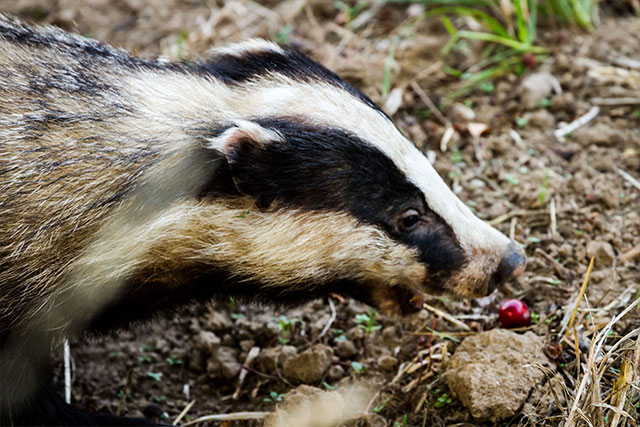
When Germans originally began breeding the dachshunds, they didn’t have larger games in mind. Foxes, rabbits, woodchucks, and other smaller games were the dachshund’s specialty. Badgers were among the biggest sized prey the dachshunds went for. The hunting was done by the standard sized dachshunds and not the miniature ones. Hunters using dachshunds to hunt badgers were always careful to employ more than one dachshund dog. Some hunters used as much as eight dachshunds for hunting down badgers.
You might ask,- badgers aren’t considered big games, so why use so many dachshunds to hunt down one badger? Here is the answer- badgers are known to be aggressive and will do everything in their power to defend themselves against attackers and invaders. While badgers aren’t exactly the most significant animals around in the wild, they look and weigh a good deal more than the average dachshund. Past experience has shown badgers inflicting severe injuries on dachshunds and a few times even killing them.
Tracking With Dachshunds
By statistics, dachshunds are the most preferred tracking dogs in Europe, and many use them for blood tracking. When hunters use them for tracking, it is mostly to track wounded deer in the United States.
It is not a hard job for a hunter to track using dachshunds, because of their natural ability to follow trails of scents. Although the process of articulating this quality to suit your needs may be exhausting, trainers should be patient. First thing to remember, dogs – most especially dachshunds – learn in their own time.
Many people seem to forget that in hunting, tracking is also important- probably the most important part of hunting. Dachshunds have a great sense of smell and are very tenacious when set on a course, but what makes them stand out among other dogs is also what makes for a huge problem. Picking up scents is easy, but while on the track of one animal, they have to deal with competing scents which may cause distractions. Luckily, the right type of training can correct this issue.
Benefits Of Hunting With Dachshunds
Experienced hunters know that dachshunds are one of the best hunting dogs out there. The Germans had their specifications right when they began the breeding of these dogs hundreds of years ago. Below is a list of some advantages you get using dachshunds as your hunting partner:
✔️Dachshunds have a very low centre of gravity which is essential to their sense of balance, especially when hunting in sloppy or hilly areas.
✔️Owning a dachshund may become a nuisance after a while, especially when they begin digging all around the yard. But while on the hunt, their propensity towards digging becomes very useful,- especially when they dig or enlarge the hole of a badger or small underground animal.
✔️Their long noses give them the extra scenting advantage when they have a great sense of smell and can track an animal for miles if necessary.
✔️Dachshunds unusually long backs give their lungs extra room that allows them to hunt longer than some hunting dogs; they have great endurance.
✔️ They have very strong fore and hindquarters that give them the extra advantage when dealing with their adversary. Their jaws are very powerful and can be very effective when attacking in confined spaces.
✔️Wiener dogs are low maintenance dogs. It will cost less money and stress to look after a dachshund than to maintain many other breeds.

Hunting with dachshunds – Training basics
It’s not just about breeding a specific breed of hunting dog; you have to train it properly. A dog who has a superior sense of smell, great stamina, and agility with many other desirable qualities is useless to you for hunting if it doesn’t have the right hunting skills. The greatest skill for a hunting dog is to be obedient, and obedience requires proper training. Dachshund training for the purpose of hunting isn’t exactly the easiest of tasks; it requires discipline and a lot of patience. Depending on the developmental stage of your dachshund, training could be relatively easy or difficult. A dachshund puppy is at its most receptive compared to a full grown dog, so it is better to start your dachshund hunting training when it is young to get maximum results.
Training your dachshund how to hunt: Step one
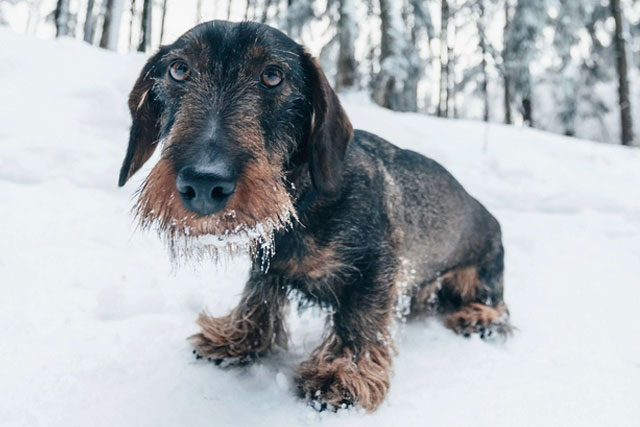
The first and most important thing is to familiarize your dog with the kind of prey it will hunt. Since dachshunds typically chase the small prey, you might want to start with hares or rabbits. Training a dachshund or any dog for that matter requires a lot of patience. It may pass several months before the desired effect is achieved.
It is always better to start your wiener dog training with an obedience trainer. A group obedience class is also a good idea. It does not only teach the dog basic commands but also helps your dachshund to socialize – allowing it to differentiate between friend or foe and transfer its aggression towards the prey. Dachshunds are among the most aggressive dogs in Europe. Since they hunt badgers, wiener dogs have genetic predisposition to be aggressive.
Training your dachshund how to hunt: Step two
After a few socializing activities your dachshund, you can begin to go on short walks with it. Going alone is best as it eliminates distraction and helps the dog relate with you as its handler and focus point when out in the field. You can take scraps or bits of its favourite food along, hiding them at strategic locations all along the way. Allow the dog to use its sense of smell as often as you can, especially to find the items you’ve hidden; make your dachshund search it for you. Praise and reward it at every successful attempt as this is an excellent incentive for learning.
Try as much as possible to avoid punishments as this may eventually become counterproductive, increasing its level of aggression and creating other potential problems in the future.
Training your dachshund how to hunt: Step three
Try to ensure that your dog is familiar with the sights and sound it may experience during real hunting, gunshots and shouting may frighten it. Before you start your dachshund on games, you should familiarize it with the smell of the animal you want it to hunt. You can set aside a few minutes a day to do that, go to a place where your dachshund is familiar with – probably the yard around your house. Set up a decoy someplace hidden (not too hidden) and trace the scent across the floor to make it easier for your dog to follow. After your dog has gotten used to this routine, make it a bit more challenging by either increasing the search area or making the scent harder to follow. Continue doing this till you notice your dachshund consciously sniffing out the scent.
Training your dachshund how to hunt: Step four
At this stage of trainig, your dachshund is already attuned to you and obeys when you give it commands, you may want to introduce prey into its training. If you live in the countryside, you might have an opportunity to do so. Rabbits or hares will do for a start. Early mornings and evenings are periods when rabbits are most active; this is an excellent time to start your dog on the game. You should initially put the dachshund on a leash so as better control its movement. If you find a rabbit or hare feeding out in the open, stop for a moment to pick up your dachshund and make it look at the rabbit by hold its head in the right direction.
At this point, the rabbit has probably noticed you and your dog and is about to flee. Once it does, set your dachshund on the ground right on the path of the fleeing animal, release the leash and allow it follow the rabbit once it indicates it has the scent; it’ll probably whine or bark when it gets the scent. You may have to do this several times before your dachshund starts responding naturally.
To help this part of your training, you could get an experienced dog to go out on a training session with you and your dachshund. Allow it to do the flushing out of the prey – you may not be so lucky finding a feeding rabbit out in the open – so that you can place your dachshund on the trail of the fleeing animal. Take note; once the prey has been routed out of its cover, get hold of the experienced dog, as it doesn’t know it’s only there to help and may go after the fleeing animal itself.
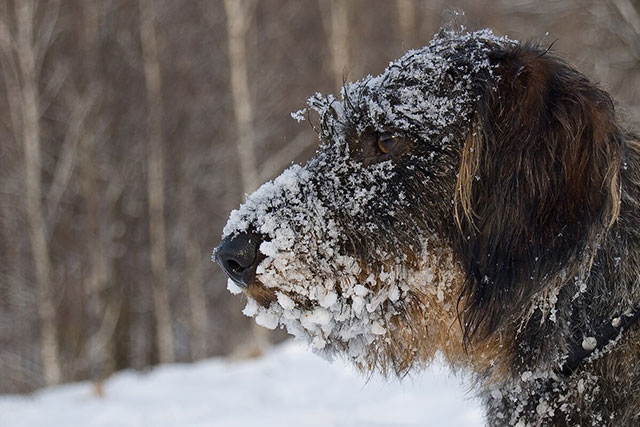
Training your dachshund how to hunt: Step five
You may want to allow your dog roam on its own, flushing out prey for themselves. Some dachshunds learn faster this way, but you should be careful, do not let your dog roam far or fix a dog bell around its neck to help trace its movement in thick cover. Signaling is also essential, most time, dachshunds stay silent on a scent trail; however, when they find their prey, they usually give a sign – as the handler, you should know and be accustomed to the signs your dog gives when it catches its prey.
The trainer at this point should be steady and continuous in his lessons, that will eventually give your dachshund mastery over the art of hunting. Progress might differ from dog to dog; hence, the trainer should be patient and enduring with your dachshund.
While dachshunds are undoubtedly great hunters and trackers, we shouldn’t forget that they also make excellent pets, -you’ll love having one of them around. If you want to find out more about dachshund origin and history, click here to read the separate article on the subject. They are adorable creatures and devoted companions, and whatever “job” you will be giving to your sausage dog, it will never disappoint you!


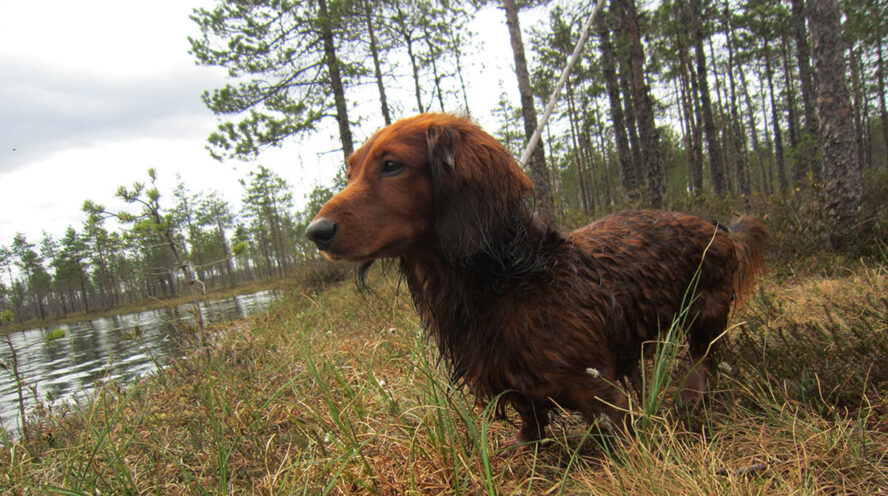
Comments
thank you
Wonderful article. I have two minis that are twelve weeks old and would like to train them to hunt. This is the first article I have found on training dachshunds to hunt. I would like to know more if anyone has additional information or someone I could talk to. Thanks
Thank you for your feedback!
Brave , fiercely loyal, intelligent with the highest bite damage to weight ratio of any domestic dog. The only dog to combine the instincts of a hound, terrier and retriever. They could almost talk and the males often have an ego the size of a planet. Loyal to your family, but they will often particularly bond with one person in that family. I like dogs, but this is the dog I truly adore. A dog that would die to protect your family, full of personality and a great hunter of small (and sometimes much larger) game.
Thank you for your comment, we are also truly in love with the dachshund breed!
Great article. My little man is astounding when on the hunt. It all began by just long walks in the forest and fields. This dog is a true hunter. He goes in, around, under ,over, and through some in believable places. Thorns,briars, swamp water!!!!!! Doesn’t matter to him. He’s 4 years old, mini wire haired. I have owned this breed for 22 years. Outstanding loyalty. He is treated as a child in our family. Thanks for the info on hunting….